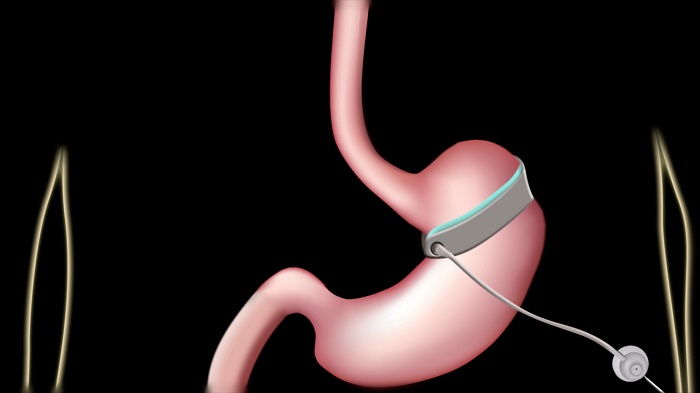Approved by the FDA in June 2001, LAP-BAND® System is the safest, least invasive and only adjustable surgical treatment for morbid obesity in the United States. For a while it was the most common weight loss operation done in the United States. The band works by decreasing appetite overall. It provides an adjustable approach to weight loss.
Minimally Invasive Approach
During the procedure, surgeons usually use laparoscopic techniques to implant an inflatable silicone band into the patient’s abdomen. Like a wristwatch, the band is fastened around the upper stomach to create a new, tiny stomach pouch that helps to suppress appetite. It doesn’t work when you eat, it works two hours later, so you don’t get hungry eating a small amount of food. Thus, patients find they can be satisfied with smaller amounts of food, because later they won’t be hungry. In turn, this results in weight loss.
Safest and Least Traumatic Procedure
Since there is no cutting, stapling or stomach re-routing involved in the LAP-BAND® System procedure, it was considered the safest and least traumatic compared to other weight-loss surgeries. The current safety of the Gastric Sleeve, however, rivals that of the Lap-Band. If for any reason the LAP-BAND® System needs to be removed, the stomach generally returns to its original form. However, people who have had long-standing issues with the Lap-Band may notice they need surgery to correct reflux.
Adjustable Treatment
The LAP-BAND® System is also the only adjustable weight-loss surgery. The diameter of the band is adjustable for a customized weight-loss rate. Your individual needs can change as you lose weight. For example, pregnant patients can expand their band to accommodate a growing fetus, while patients who aren’t experiencing significant weight loss can have their bands tightened.

To modify the size of the band, its inner surface can be inflated or deflated with a saline solution. The band is connected by tubing to an access port, which is placed well below the skin during surgery. After the operation, the surgeon can control the amount of saline in the band by entering the port with a fine needle through the skin.
Considerations
It is a foreign device that you place in the abdomen and it has lost favor over the past few years. Still, many people find that the band works well for them with weight loss. Many of the surgeons who put the band in are no longer taking care of them, and we are quite Lap-Band friendly here. If you had your band placed by another surgeon who isn’t taking care of them, we would love to help you continue your Lap-Band journey.
The band can erode into the stomach about two percent of the time, and if that happens the band needs to be removed. Eating too fast can cause the band to change positions (slip) which may require surgical correction or a simple adjustment. The port and tubing can break (2%) requiring re-operation. If any part of the band becomes infected it needs to be removed.
The band can easily be removed and revised to another procedure, such as the gastric sleeve.
